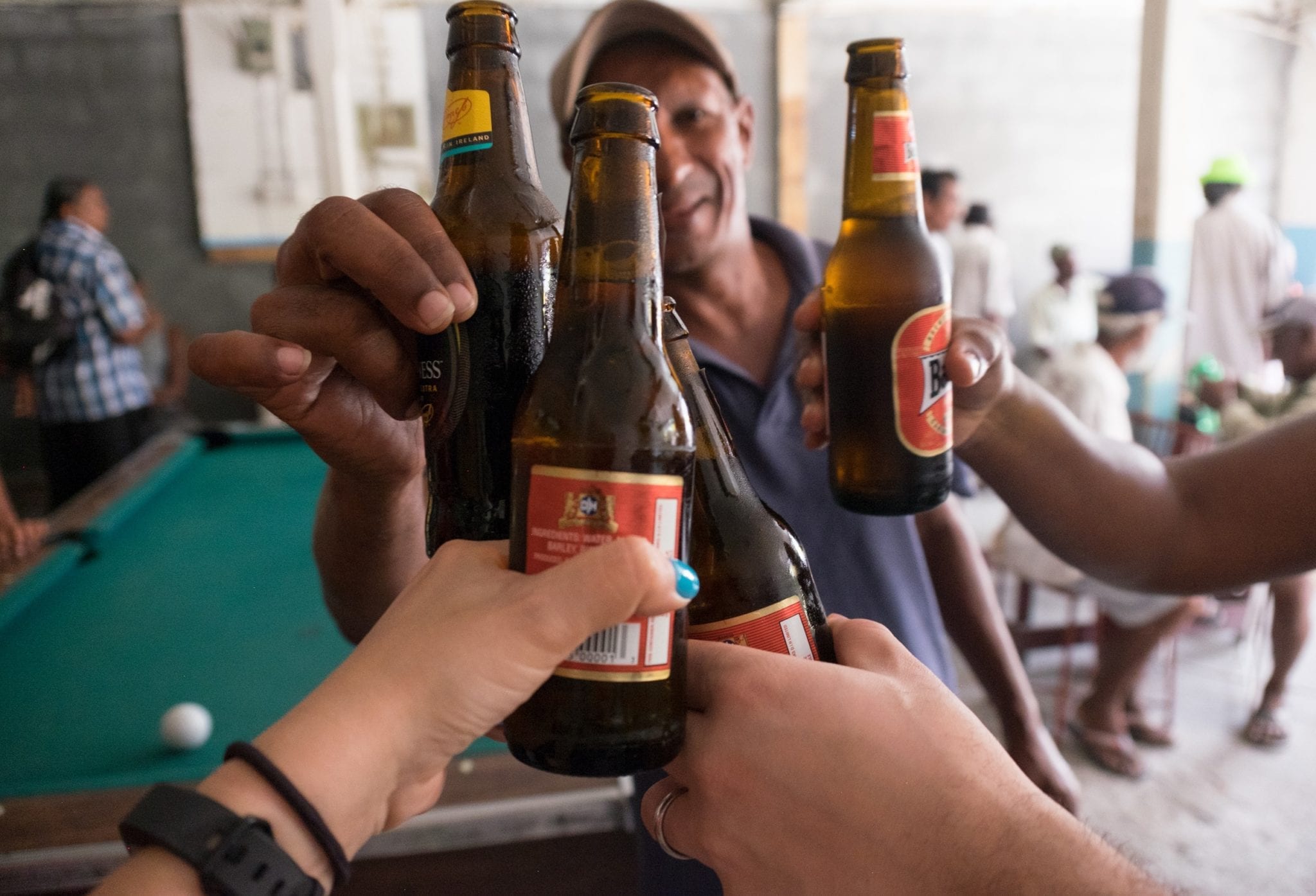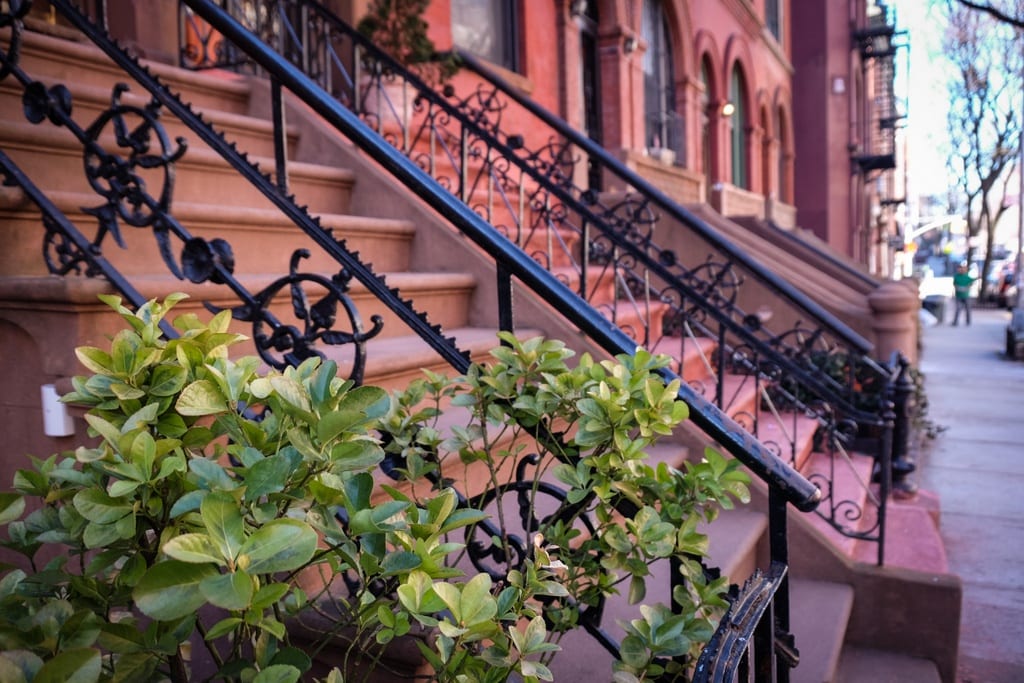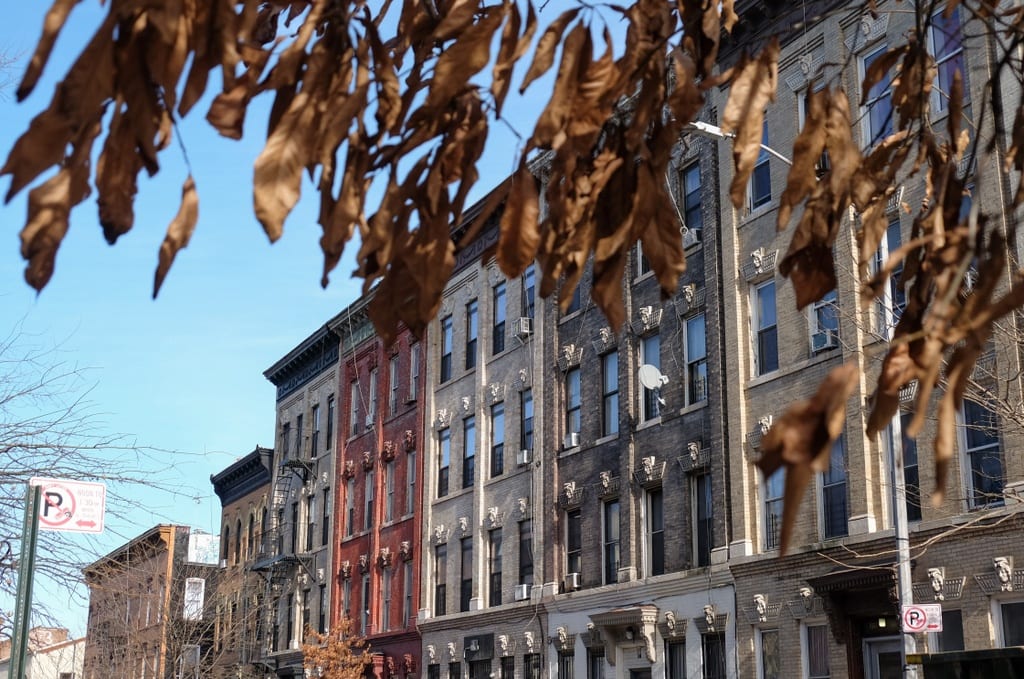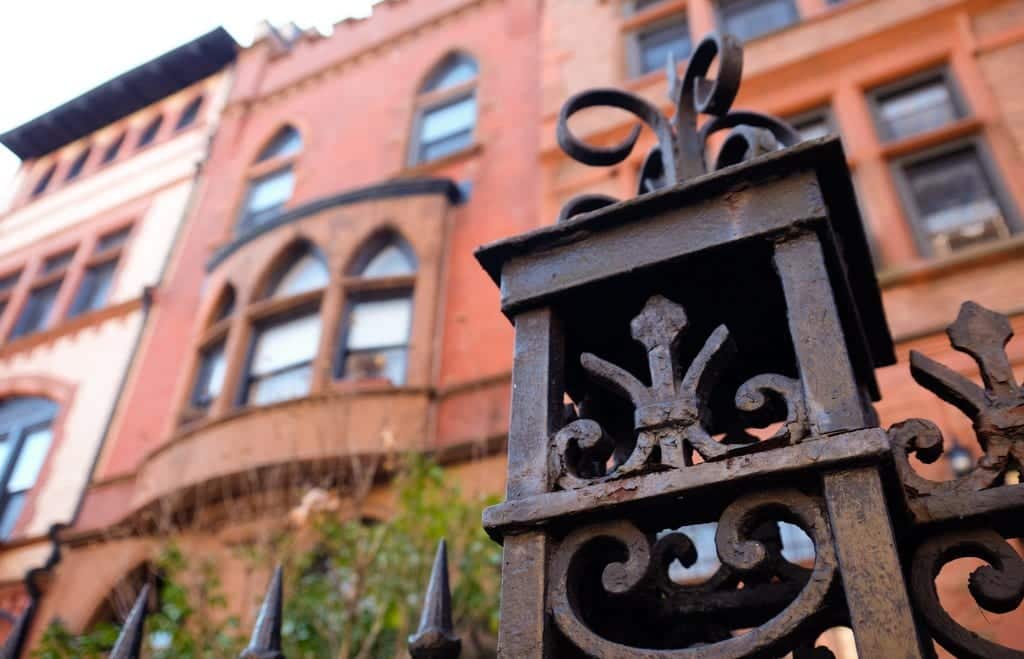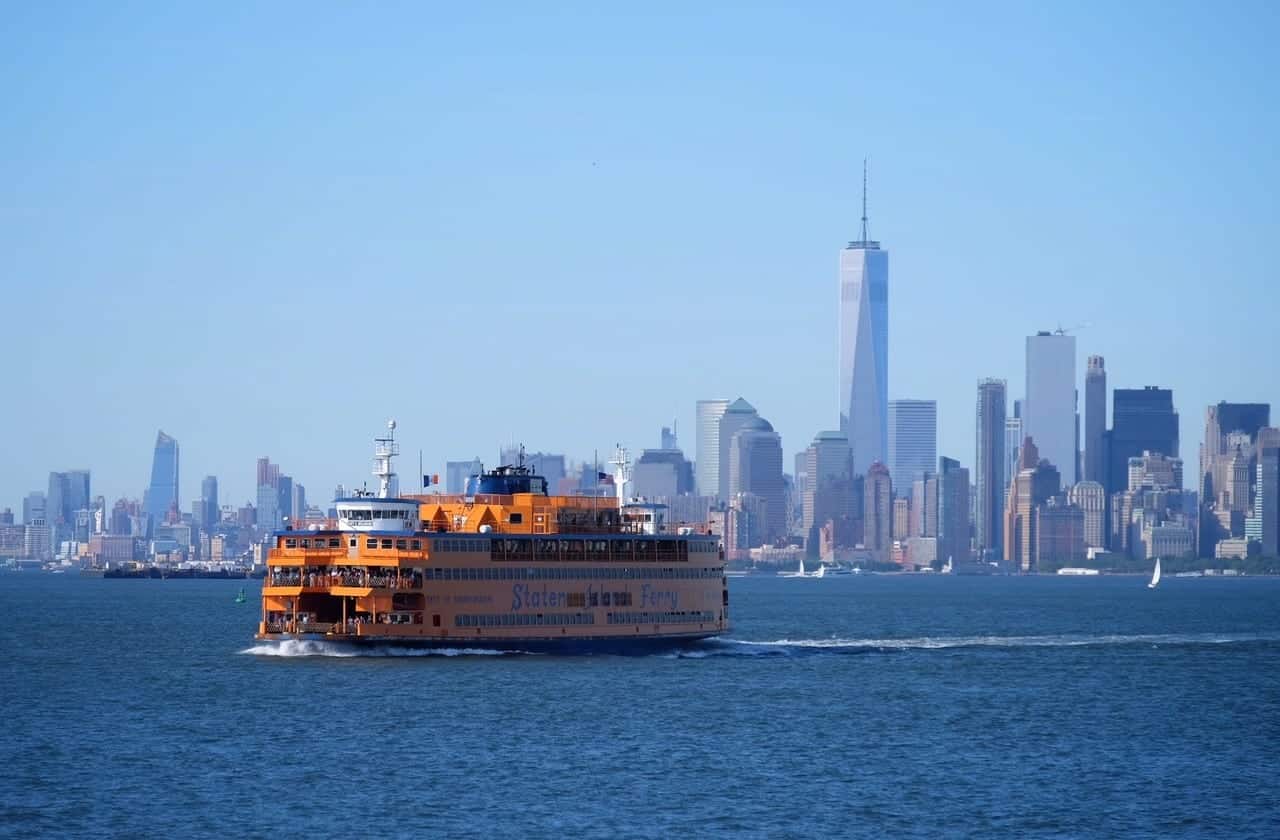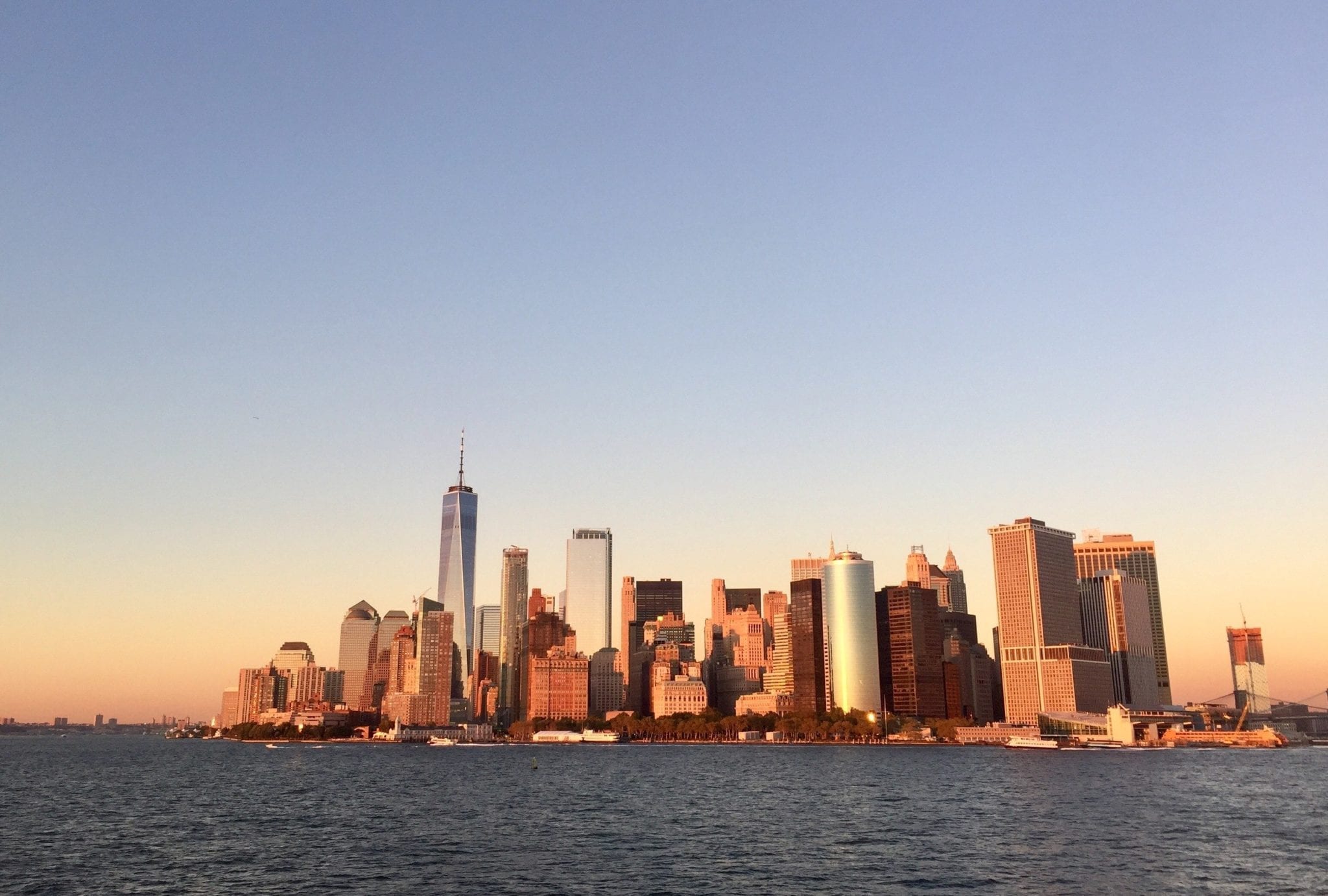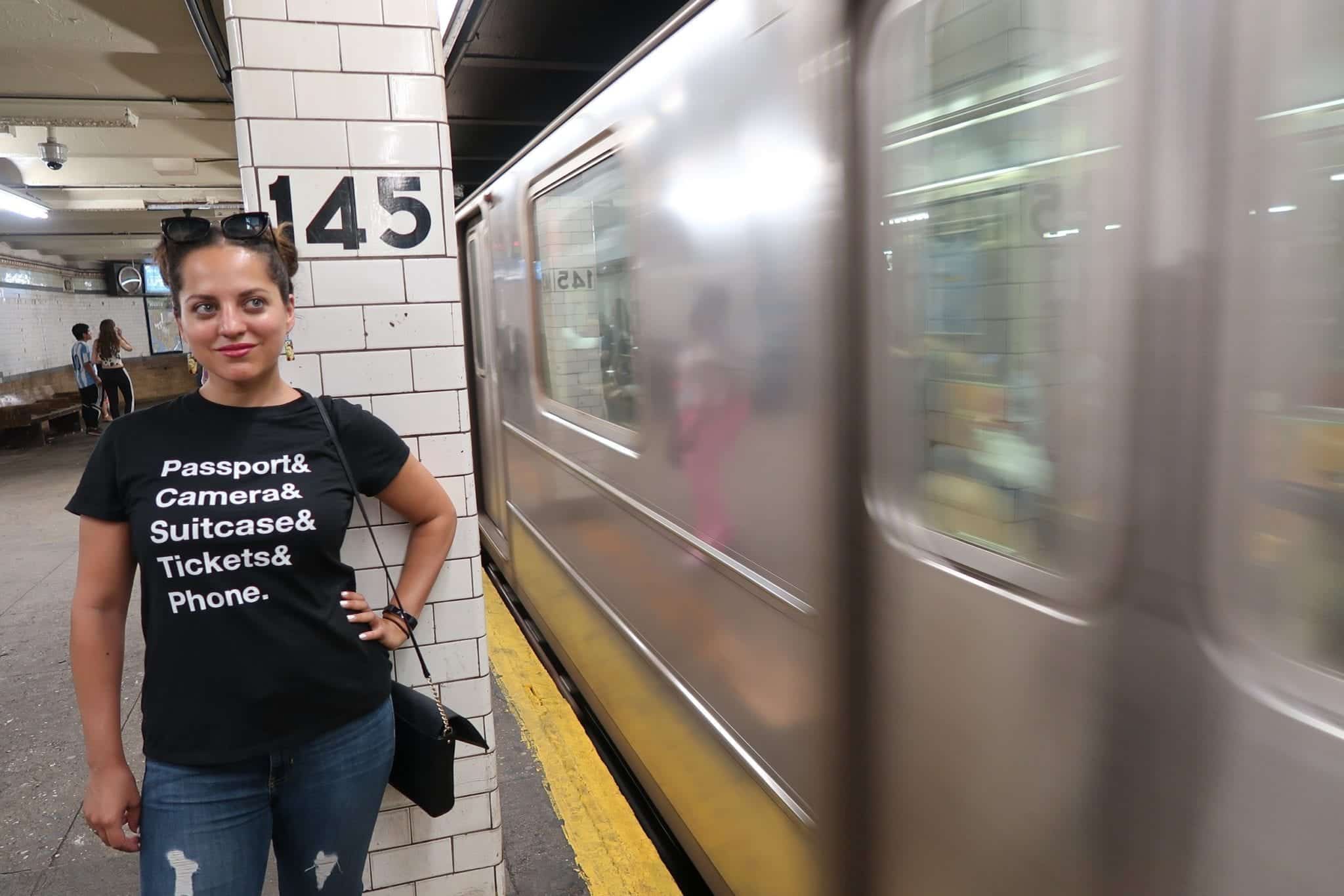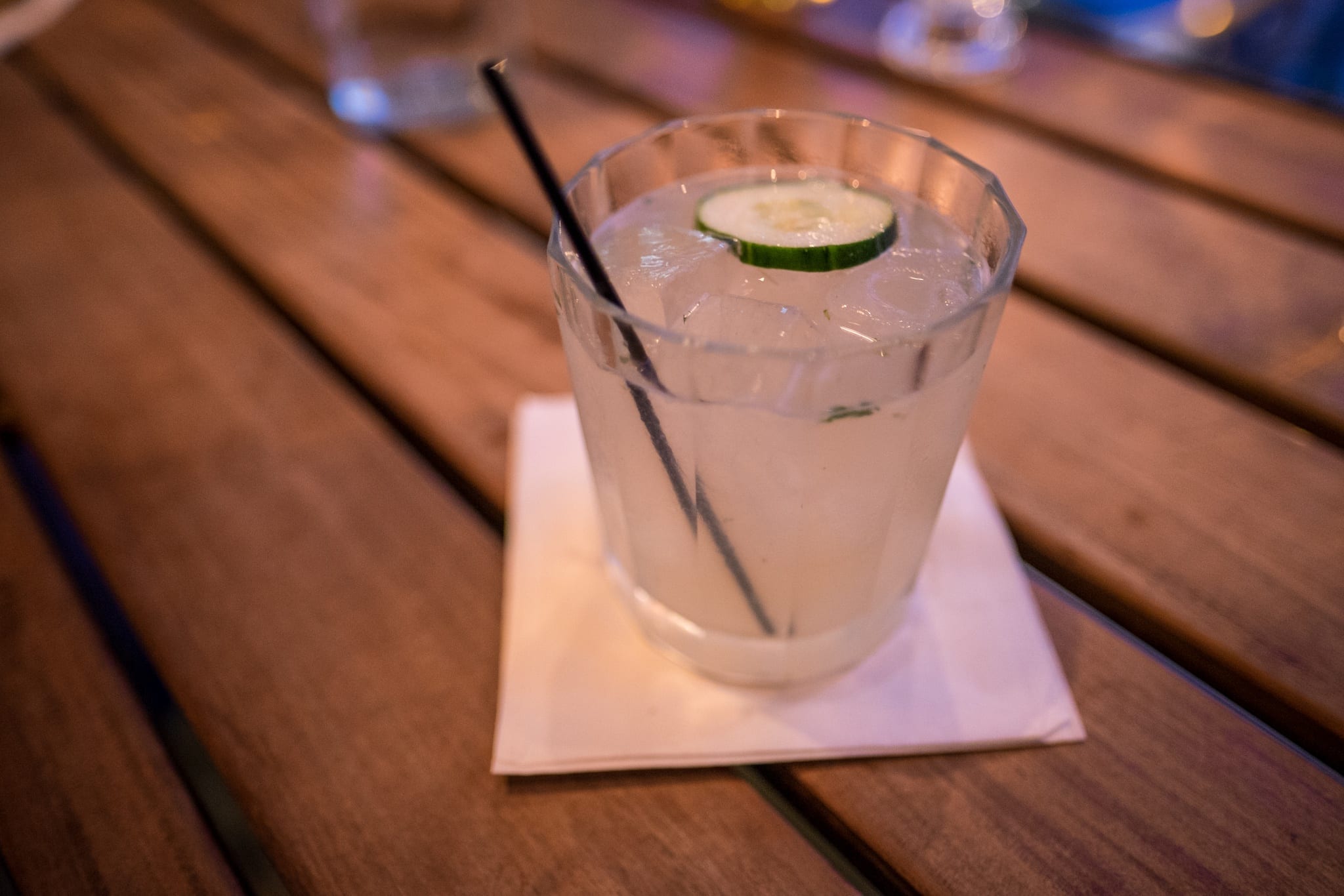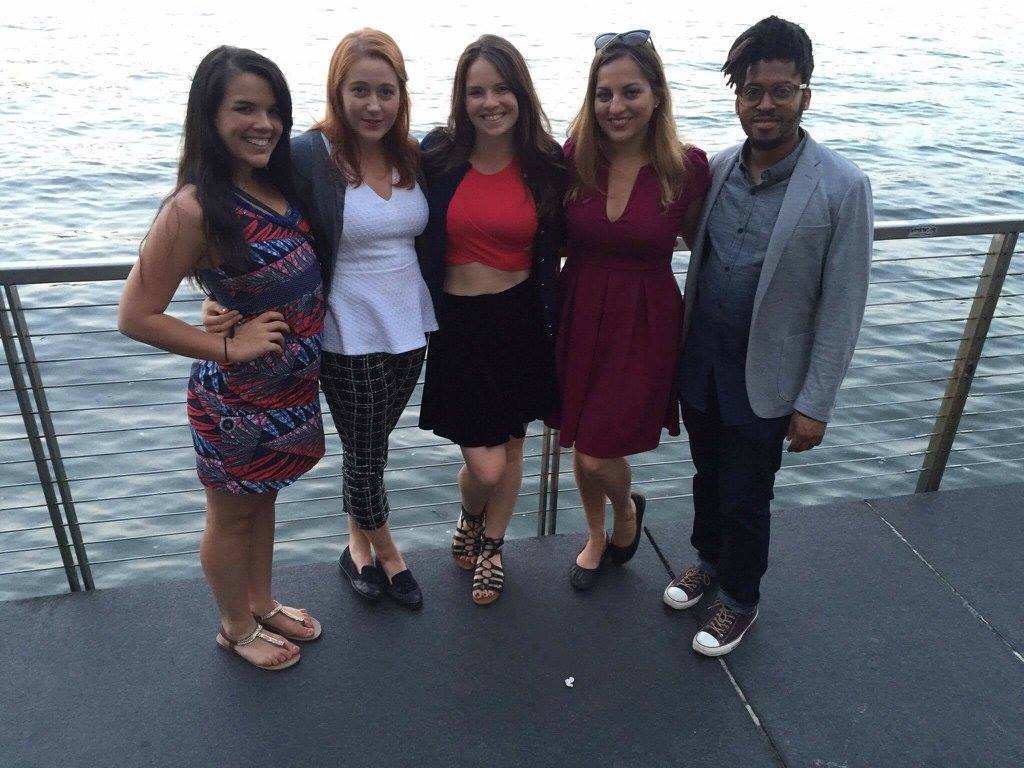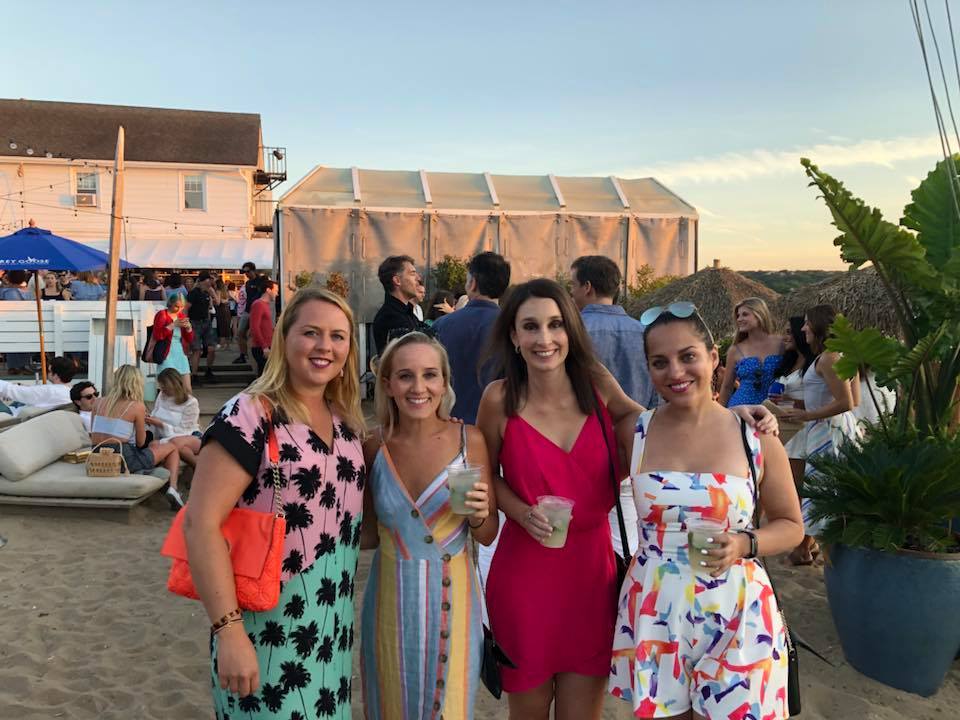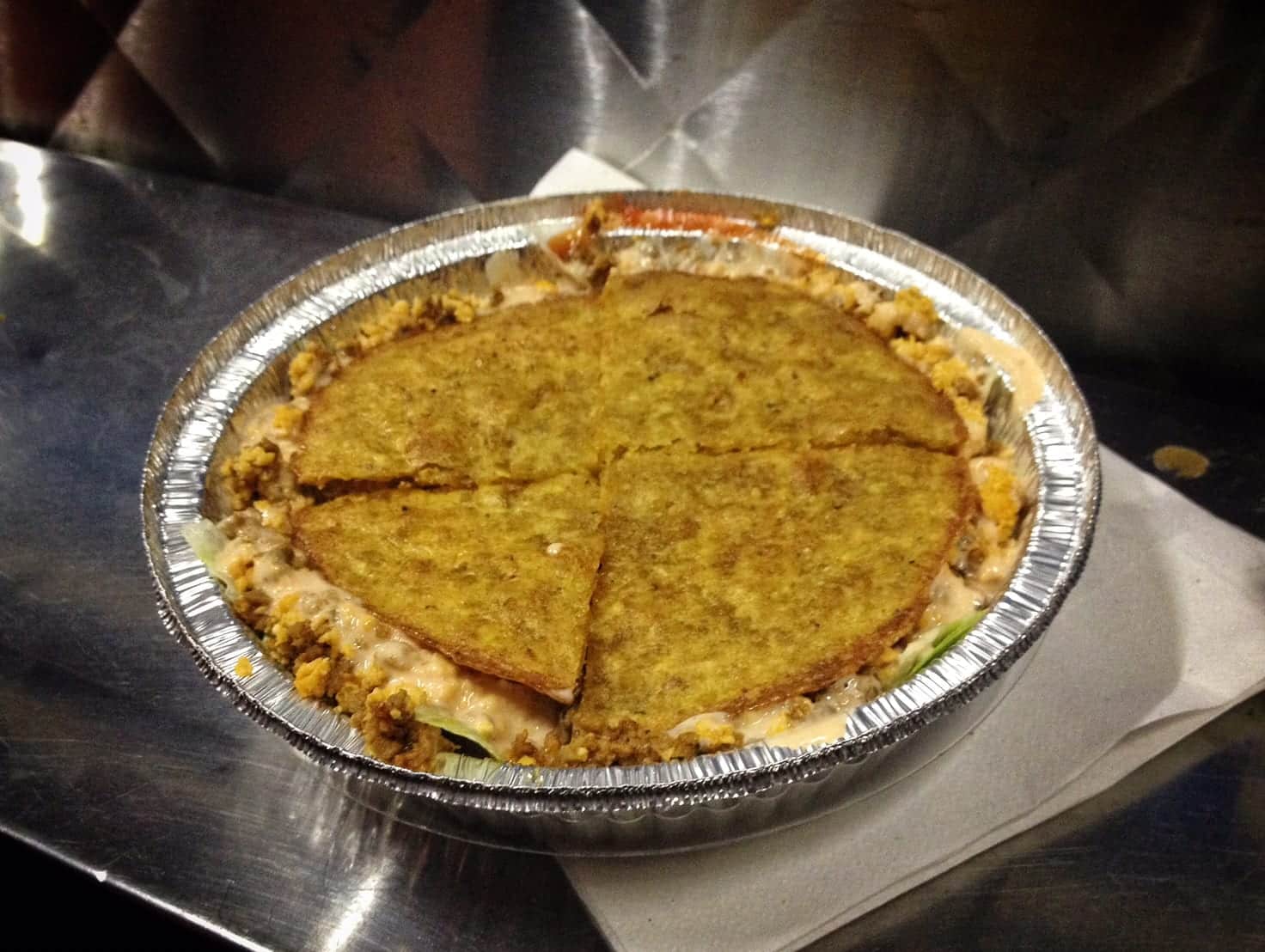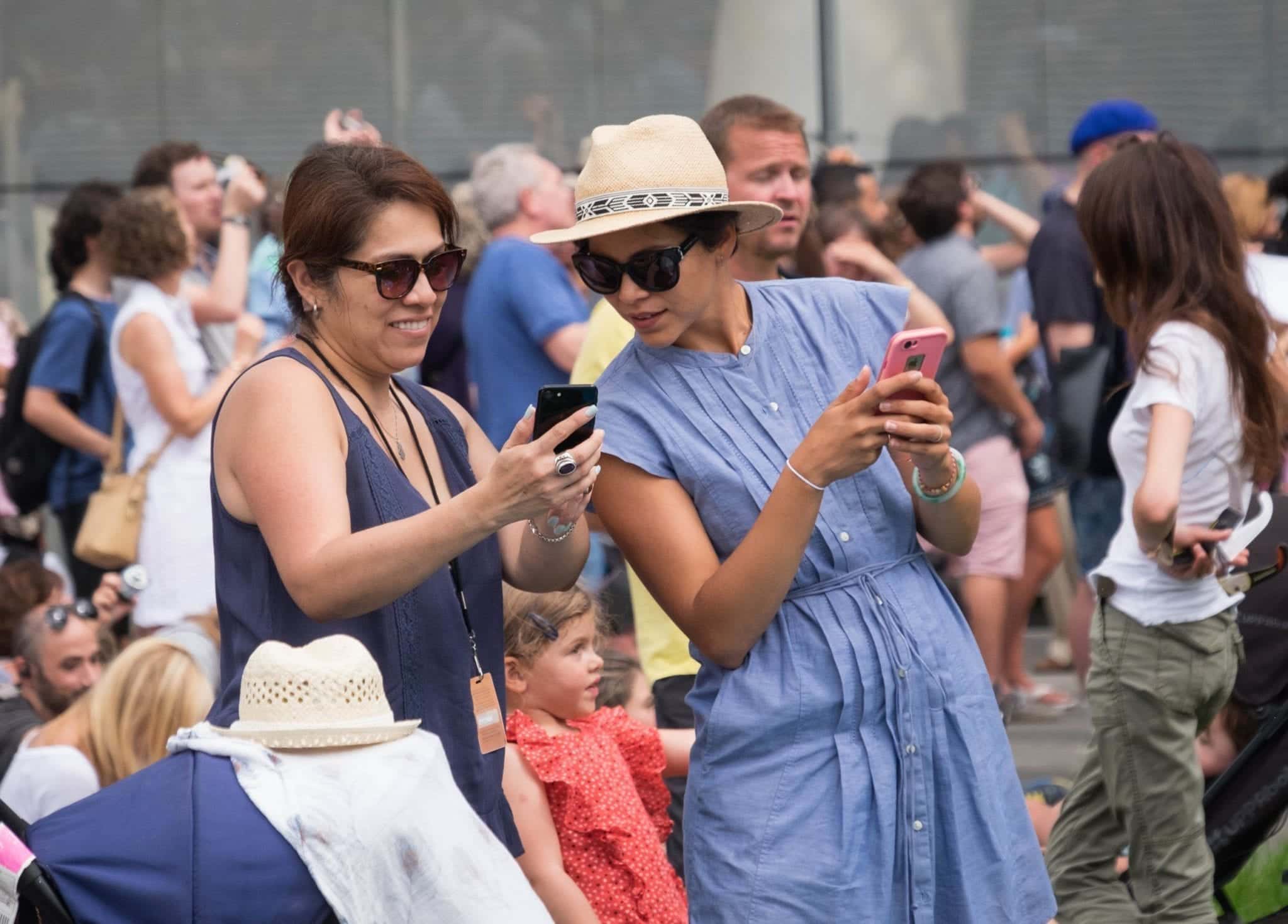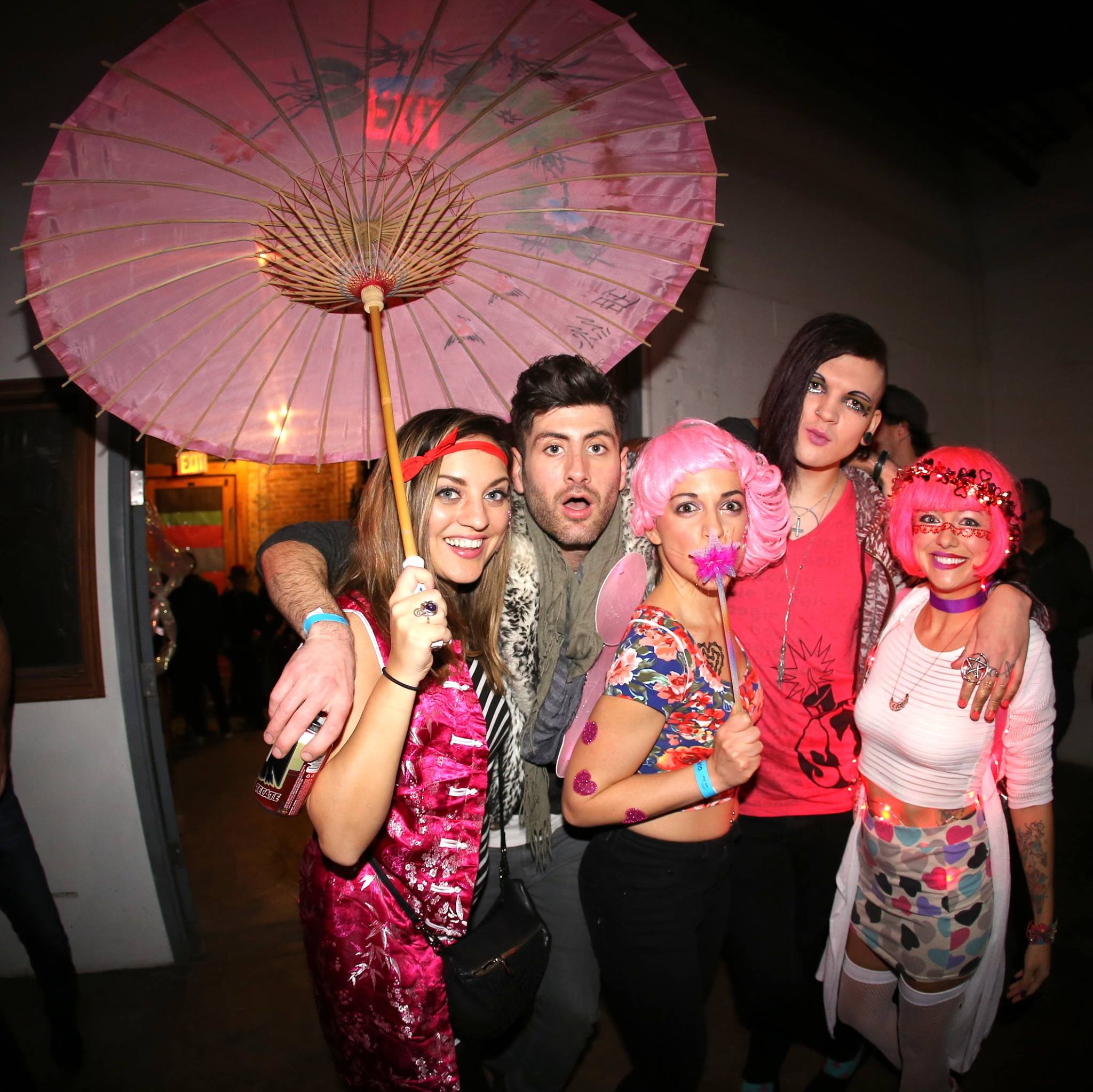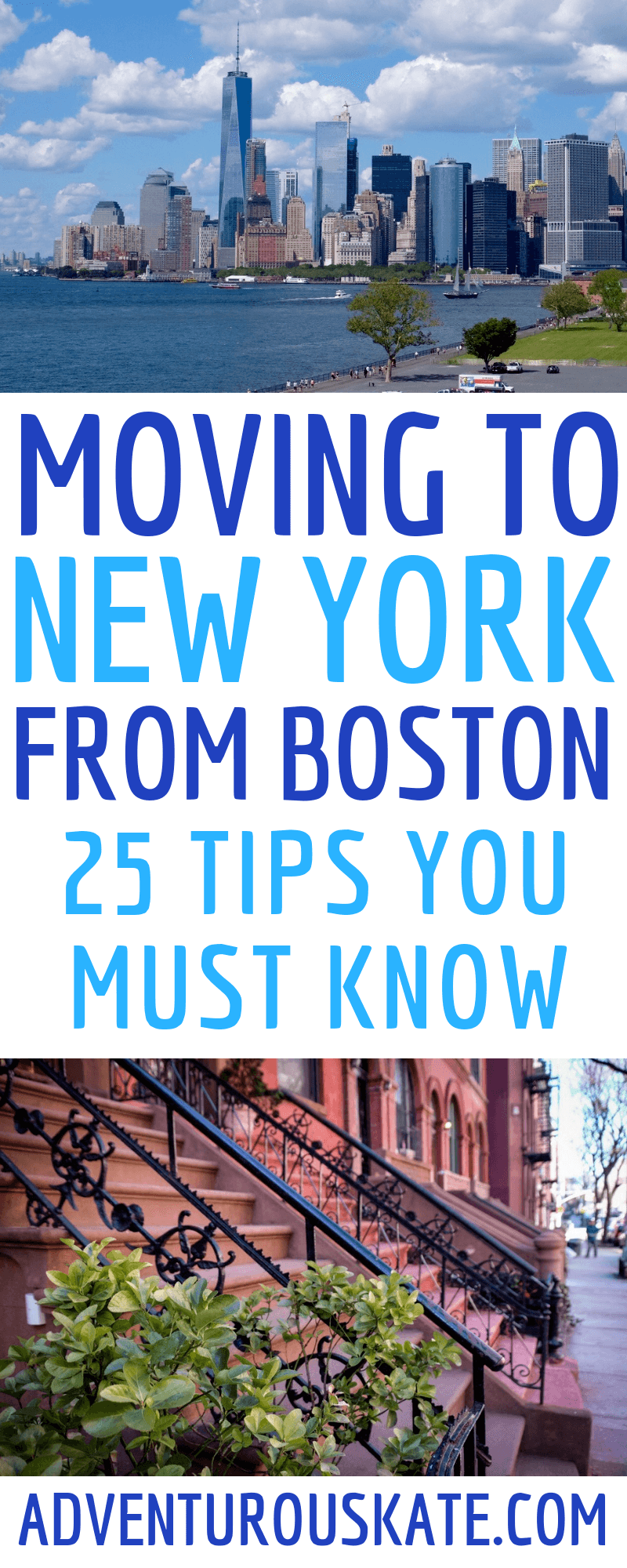Adventurous Kate contains affiliate links. If you make a purchase through these links, I will earn a commission at no extra cost to you. Thanks!
Moving from Boston to New York was one of the best decisions I’ve ever made. I made the leap after several years of running my own business while traveling the world, and I haven’t regretted it for one second.
I grew up in Reading, 20 minutes north of Boston. After college, I lived in Boston for four years: first in Davis Square, Somerville, for two years, then Fenway for another two years. While I contemplated moving to New York in early 2010 (not coincidentally, shortly after Ted Kennedy’s Senate seat went to a Republican), I decided to travel the world instead.
Five years after traveling, I decided to move back to the States and immediately set my eyes on New York. I moved to Hamilton Heights, Harlem, in 2016, and I have lived here for more than three years.
Having gone through the process of living in both these cities, I’ve put together a guide that will make your move as smooth as possible. Whatever the reason for your move from Boston to New York — for a job, for a partner, for an adventure — here are 25 key tips you need to know before you pack.
1. Boston and New York appear very culturally similar — until you get there.
Boston and New York have a lot in common on the surface. In both cities you can walk everywhere, live without a car, and get by using public transportation. Both cities are liberal enclaves in reliably blue states and have cold winters and hot, humid summers. Both are filled with fast-moving, fast-talking people. Both have strong tech and healthcare industries and world-class universities. I’d argue that Boston and New York far more in common with each other than with Los Angeles, Chicago or San Francisco.
That’s just the superficial stuff, though.
The differences become clearer after you spend a longer amount of time there. Boston has a more homogenous feel among its residents, and while it looks diverse on paper, people live very segregated lives.
Boston has a more provincial feel and ends up feeling more like a large town than a major city. I constantly run into people I know from high school in Boston.
And Boston’s sports culture is what ties the city together, which is great if you’re a fan and frustrating if you’re not.
New York has a much freer feel. This is a city for everyone and everything. It feels like there are no limits. It’s big enough to satisfy everyone. Part of the bliss of living in New York is that there will always be far more of it than you could ever discover on your own. There will always be people smarter than you, better looking than you, more brilliant than you.
At the same time, New York seems like it’s making life as hard as humanly possible for you. Hard to get an apartment. Hard to get by financially. Hard to date. Hard to meet people when everyone has such busy lives. Living in a city that constantly grinds you down can be tough to deal with.
Most of all, the people who move to New York are a special breed. When you’re the kind of person who upends your life to travel to a thrilling and difficult city, you’re probably an interesting person yourself.
“There are roughly three New Yorks. There is, first, the New York of the man or woman who was born here, who takes the city for granted and accepts its size and its turbulence as natural and inevitable. Second, there is the New York of the commuter — the city that is devoured by locusts each day and spat out each night. Third, there is the New York of the person who was born somewhere else and came to New York in quest of something. Commuters give the city its tidal restlessness; natives give it solidity and continuity; but the settlers give it passion.”
–E.B. White, Here is New York
2. New York’s sports culture is VERY different from Boston’s.
New York does not live and die by sports, an enormous difference from Boston. When I lived in Boston, I was used to seeing every man on the street in a Red Sox hat, from custodians to CEOs and everyone in between. At work, every conversation revolves around whatever sports team is currently playing. And whenever I went to a bar, I had to wait for the game to end before I could strike up a conversation with a guy.
Growing up in New England, I thought this was normal — that every state was as crazy about its local sports teams as Boston. My travels have shown me this isn’t the case at all, and it’s especially not the case in New York.
The single biggest surprise after I moved to New York was how seldom you see Yankees hats in Manhattan. In Boston, if you see a crowd, half of them will be in Red Sox hats. In Manhattan, you’ll see a Yankees hat every now and then, but they are definitely not standard.
And as for the games, outside of designated sports bars, areas around the stadium, and commuter-heavy areas like midtown with game specials, you’d have no idea the Yankees, or the Jets, or the Knicks, or any of the other teams, were even playing.
The parts of New York that tend to be more sports-oriented tend to be the areas that don’t get as many transplants — the outer boroughs (The Bronx, Staten Island, deeper and less-gentrified parts of Brooklyn and Queens). New Jersey and Long Island tend to be this way, too.
3. Don’t be mad, but…the Red Sox-Yankees rivalry is fairly one-way.
I used to live a 30-second walk from Fenway Park in Boston, right on the corner of Ipswich and Charlesgate East. I’m used to hearing “Yankees suck!” chants when the Red Sox beat the Tigers and Five-Dollar Hat Man setting up shop outside my window after each game. (My sister and I used to joke about leaning out the window and selling four-dollar hats to see how he’d react.)
The Red Sox-Yankees rivalry is one of the biggest sports rivalries in the United States. And Red Sox fans take it seriously. Supporting the Yankees is anathema in New England. Wear a Yankees hat in the Boston area and you’ll get dirty looks at the bare minimum, possibly insults or worse.
But in New York? Nobody notices or cares. Wear a Red Sox hat in New York and nobody will give you a second glance unless you happen to be in the South Bronx on game day. New York is a city of transplants and people support all kinds of teams.
These days, when the Red Sox and Yankees are in the playoffs, my dad asks me how the atmosphere is in New York…and honestly, in Manhattan, you’d have no idea any playoffs were even taking place.
4. Don’t worry, you can watch Boston sports games with Boston fans in New York!
If you want to watch the Red Sox or Patriots game while surrounded by like-minded folks, you can absolutely do that. I recommend Professor Thom’s in the East Village.
That’s one of the nicest things about New York — people here come from everywhere, so you can find sports bars for all kinds of professional teams and even bars for college teams!
5. New York has a rule about how much of your income you can spend on rent.
Your annual pre-tax income must be at least 40 times your monthly rent. This is a fairly strict rule in New York and almost every landlord follows it. How much is 40x? If you make $60,000, you can spend up to $1,500 per month in rent; if you make $100,000, you can spend up to $2,500 per month in rent. If you make $800,000 per year, I have no idea why you’re reading this post, but call me if you ever want help spending your cashola.
Applying for an apartment in New York is a challenging task. Apartments move EXTREMELY quickly and most don’t open up until within a month of their availability.
Before looking for an apartment, you need to be ready with a letter from your employer confirming your salary, pay stubs, bank statements, tax returns, photo ID, and recommendations from prior landlords. If you get the apartment, you’ll need to race to your bank for a cashier’s check.
6. Most New York apartments charge a broker fee.
While some Boston apartments charge broker fees, it’s a much more common practice in New York. Most, though not all apartments, charge a broker fee of 15% of the annual rent (just under two months’ rent). Occasionally a broker might charge one month’s rent for a broker fee.
You can search for no-fee apartments on StreetEasy or other apartment booking sites. But you will be searching a much smaller selection. Personally, my first New York apartment had a one-month broker fee (which the broker said they did as a favor); for my second apartment, there was no broker fee because the previous tenants broke their lease and paid the broker fee.
7. There are a few ways around the apartment difficulties.
If you’re struggling to find a place under these circumstances, or if you have a low credit score, there are ways to get an apartment. Most landlords will be fairly lenient if you have a guarantor (someone who makes 80x the rent and legally agrees to pay the rent if you can’t), or if you pay several months’ rent in advance. You’re especially in the clear if you can pay a full year’s rent in advance, and some of my friends have done that.
Otherwise, consider subletting a room or apartment instead. New York’s housing laws tend to favor the tenants, which is why they make it so difficult to get an apartment in the first place. But once you’ve been living there for 30 days, even if you’re not on the lease, it’s extremely difficult to evict you — so once you’re in, if you’re a decent tenant, you’ll probably be able to stay.
8. New York’s housing and roommate culture is different.
In New York City, it’s normal to have roommates into your forties and beyond. This is an expensive city. You are not a loser if you live with roommates. In fact, high-earning people often choose to live with roommates to live in a luxurious apartment with killer amenities.
And along the same lines, it’s okay to live in a studio apartment into your forties and beyond. If you like your studio, there’s no shame in it! The city is your meeting space, and apartments are tiny in New York. (Well, until you get above 110th St. And now you know one of the reasons why I live in Harlem.)
READ MORE:
Why I Moved to Harlem Instead of Brooklyn
9. Try to get a job before moving to New York.
Many people assume that they’ll simply save up money, move, and search for a job once they get to New York. This is actually a very difficult approach. You won’t be able to rent an apartment of your own without a job unless you can pay a year’s rent in advance. So it’s best to have a job waiting for you with a confirmed salary before you make the move.
The catch-22 is that many companies will ignore your resume if it says you live outside New York. I recommend asking a local friend if you can use his or her address for your resume, just to get it seen.
If you choose to move to New York without a job, you’ll need to have a LOT of money saved up — I’d recommend a minimum of $10,000 if you plan to live with roommates, $15,000 if you don’t.
When I moved to New York as a self-employed person, it cost me nearly $10,000 just to move into my apartment. (My rent in my one-bedroom apartment in Harlem was $2,100 — first and last month’s rent, plus six weeks’ security and one month’s rent broker fee came to $9,450 altogether.) And did I mention that I had spent the last five years traveling and owned zero furniture?!
The best case scenario is to work for a company that allows you to transfer to the New York office. Back when I lived in Boston, I worked for a company whose parent company had offices in New York. As much as I hated that job — MAN, did I hate that job — knowing what I know now, the smartest thing would have been to get a job offer at one of their New York companies. You can always do it for a few months and look for a new job.
10. Bodegas are lifelines in New York.
Bodegas, or independent delis, are located on most blocks and open all night long. They sell everything you need and they make sandwiches and other food as well. Need condoms at midnight? Running to meet someone, hungry, and need to grab a banana? Have a headache and need just two Advil? Feel like a baconeggandcheesesaltpepperketchuponaroll? You hit up a bodega.
Part of the joy of living in New York is finding “your” bodega. And you will inevitably show off your bodega with pride to friends visiting from other neighborhoods. (I love my bodega. They know I love a chicken cutlet sandwich with pepperjack cheese, mustard, extra pickles, and banana peppers.)
This is a far cry from Boston, where there are some 24-hour shops (I was a regular at Symphony Mart when I lived in Fenway) but nothing on the level of a New York bodega.
Intimidated? Don’t be. I’ve always loved this post from AskNYC on Reddit — Can You Teach Me How To Bodega? And remember to respect the cat.
11. New York is much larger than Boston in size and scale.
When I moved from Boston to New York, I knew I would be living in a much larger city. But knowing something intellectually is very different from dealing with it first-hand. It can take you so long to get from one end of New York to the other, especially between boroughs.
I live in Harlem and occasionally go out to parties in Bushwick, Brooklyn. Under ideal circumstances, this journey will take around an hour and 20 minutes via subway. But making that journey late at night with the slower, seldom-running trains, as well as weekend closures, can take twice as long.
Uber and Lyft will cost you a lot more in New York than you’re used to paying in Boston, too. Once in Boston I got from Central Square in Cambridge to the South End, a decent distance, for just $10. That will not happen in New York. I can spend more than $10 without even leaving Harlem!
When choosing an apartment in New York, it’s helpful to be located on an express train. Many New Yorkers think Harlem is far from everything, but the express A train from 42nd St. to 145th St. only takes 14 minutes and 3 stops!
12. The subway runs all night in New York.
I have so many memories of downing my final Sam Summer at Beacon Hill Pub and sprinting to Park Street to grab the last red line to Davis. Those were the days before Uber and if you missed that train, you had to hail a cab and pay for an expensive ride all by yourself.
This makes getting home much easier and cheaper — you don’t have to leap out of the bar to make the last train. But just because the train runs all night, it doesn’t mean they run often all night. Many express trains run locally late at night. Sometimes there might be 20 minutes or longer between trains. Homeless people often sleep on the subway at night, especially the E train, as it’s a long line that stays underground.
Frankly, the subway is in a very tough state at the moment. The MTA (yes, just like the train Charlie couldn’t get off in Boston) is chronically underfunded and understaffed, which leads to crowded trains in poor condition. Weekend service is an absolute mess. For awhile, they were going to shut down the L train completely for two years; instead, they just decided to reduce L service on nights and weekends (I had to wait 28 minutes for an L train this past weekend). It’s a pain, and Governor Cuomo is the one responsible for it, but the only thing you can do is suck it up.
Another tip — don’t refer to trains by their colors in New York. Refer to them by their letter or number.
13. Everything is open so much later in New York.
In Boston, last call is at 1:45 AM and if you want drinks after that, your best option is to head to Chinatown and ask for the “cold tea,” whereupon you will be given an illegal teapot full of beer. In New York, many places are open until 4:00 AM. As a result, not only can you stay out later, but nightlife starts and peaks later than in Boston.
People tend to work a later schedule in New York, too. Most of my 9-5 friends in New York tend to work 10:00 AM-7:00 PM or so.
When I lived in Boston, once a month I would stay out until 4:00 AM on a weeknight, then go to work at 9:00 AM the next day. (Ah, my twenties, when I could bounce back from literally anything.) Looking back, I have no idea what the hell I did. RISE, the after-hours club that only sold Red Bull? The South Street Diner? One night, Flash’s let me and my friend drink until 3:00 AM as long as they turned off the lights. Who knows?!
READ MORE:
124 Things to Do in Harlem: A Guide
14. Happy Hour is a thing in New York.
It took me so long to realize that Boston’s lack of happy hour is not a normal thing. Massachusetts is one of a handful of states to prohibit happy hour drink specials. Then again, when living in Boston, I went to Kitty’s in the Financial District with its creative work-around — they would serve “Kitty Brew” (a.k.a. Miller Light) at low prices, but the “Kitty Brew” keg happened to be empty whenever it wasn’t happy hour.
It’s pretty rare to find a bar in New York that doesn’t have happy hour drink specials. Enjoy!
15. Beer is not sold in liquor stores in New York.
First off, Bostonians, don’t call a liquor store a package store or a packie. That’s Boston vernacular and nobody in New York will know what you’re talking about. Plus, in this state, beer is sold separately from liquor and wine.
If you want beer, buy it at a grocery store. Bodegas, drugstores, and convenience stores also sell single servings of beer.
If you want liquor or wine, buy it at a liquor store. Some wines are for sale in grocery stores, but it’s more like “wine product” and not real wine.
To this day, I still do a double-take when I see beer for sale at CVS.
16. People dress up in New York much more than in Boston.
Dressing up for casual events is the norm in New York City, especially Manhattan. See that picture above? That was just a few friends meeting for a casual tour with The Black Gotham Experience. Some of us had worked at home that day; we just dressed up because it’s what you do here. Had this taken place in Boston, everyone would have been in jeans.
Part of that is that clothing featuring your favorite sports teams isn’t as common or accepted as everyday wear in much of New York. If you’re wearing a t-shirt with a team name on it and you’re not working out, you’re probably visiting from out of town. That’s a big difference from Boston, where EVERYONE wears sportswear. I’ll never forget the time I went to Legal Sea Foods in Boston on Easter Sunday and saw a woman waiting in front of me wearing a Red Sox jersey — but it was her formal Red Sox jersey.
When I go out in New York, even if it’s just for casual drinks, I often dress up in a dress and heels and look at myself, wondering if I dressed up too much. And no matter what I wear, the answer is always no. There is ALWAYS someone more dressed up than me.
In Boston, I would often wear jeans and a t-shirt when going out to a cool bar with friends. In New York, I would only do that if it were at the last minute and I were going out to one of the casual bars in my neighborhood.
Do note that this is a bit more pronounced in Manhattan; the outer boroughs are more casual and the cooler parts of Brooklyn tend to have a more casual but still fashion-conscious style.
READ MORE:
I Saw Hamilton and Yes, It Really Is That Great
17. Everything seems to happen in New York.
Boston feels like a city where everything happens — but it’s nowhere on the scale of New York. I met Gloria Steinem at an event for Dr. Willie Parker. I attended an LGBT charity fundraiser thrown by Tituss Burgess and got to hang out with him. I regularly go to book events and meet authors I love.
And even though New York is a safe blue state, politicians always come through here for fundraising and media opportunities. In the past year alone, I’ve gone to events for Pete Buttigieg, Julián Castro, Kirsten Gillibrand, and Stacey Abrams. (And I got to meet three out of the four of them, and even have a long conversation with Julián!)
And then there are the food trends. We are home to the cronut, Black Tap milkshakes, rainbow bagels, the sushi donut.
Recently, I saw several of my Boston friends waiting in line for hours to try Taiyaki, a new place serving crazy ice cream creations in fish cones. I’ve been to Taiyaki in New York. There has never been a line. We take this stuff for granted.
Broadway happens here. The US Open happens here. Cool dating apps like Bounce exist here and here alone. There’s so much to do here, the FOMO can stress you out!
READ MORE:
Black Tap and the Craziest Milkshakes in New York City
18. The Hamptons are like the Cape…kind of.
The Hamptons are mythologized in New York culture — isn’t this the place where New York’s most moneyed and fashionable people go to escape the city? Well, sort of. The South Fork of Long Island is home to several gorgeous beach towns where New Yorkers flock each summer. It’s the closest thing to going down the Cape, especially the pricier Cape towns.
I dig the Hamptons. It’s a lot of fun, and the beaches are lovely but it’s also insanely expensive — arguably the worst value for money place I’ve ever been. And like the Cape, the traffic there is awful (take the train over the jitney if you can).
The Jersey Shore is another good beach option for New Yorkers. There’s a huge variety of beaches for a variety of price points. You can even take ferries there from Manhattan! And Fire Island, particularly the Pines and Cherry Grove, are the LGBT hangout equivalent to P-Town in Massachusetts.
And if you really miss your Massachusetts beach spots, you can fly direct to Hyannis, Nantucket, or the Vineyard from New York City on a few different airlines.
19. New York has different immigrant communities than Boston — and thus different food.
In Boston, you’re spoiled for choice when it comes to Salvadoran food in East Boston, Haitian food in Cambridge, or Vietnamese food in Dorchester. And that doesn’t include the amazing Portuguese and Brazilian food in the suburbs.
But New York has almost every kind of food you can imagine — but it has different immigrant communities and thus different strengths. New York’s largest immigrant community is the Dominican community, and Dominicans primarily live in upper Manhattan (including my own neighborhood of Hamilton Heights). Come here for the mofongo and patacon — and the music.
Moving to New York is the perfect opportunity to try Guyanese food in Richmond Hill, Ukrainian food in the East Village, Filipino food in Woodside, Ecuadorian food in Corona, Greek food in Astoria, Sri Lankan food in Staten Island. And while Manhattan has a Chinatown, there’s a much larger Chinatown in Flushing, Queens, with people and food reflecting China’s rich diversity.
20. New York is a lot less Catholic than Boston — and a lot more Jewish.
Growing up in Massachusetts, there were only a few Jewish kids in my grade — maybe 10 or so. I’ve never been to a bar or bat mitzvah in my life. Tell that to someone from the New York metro area and they’ll laugh. So much of New York’s unique culture comes from the Jewish community, from food to slang to business!
New York City is home to the largest Jewish population outside Israel (1.1 million), and Jews consist of roughly 13% of the city’s population. Once I walked down Broadway on the Upper West Side in the springtime and overheard three conversations about Passover in a row! There are Orthodox and Ultra-Orthodox Jewish communities in New York as well, mostly concentrated in Brooklyn.
It’s a huge shift from Boston, where Catholicism dominates. Moving to New York makes you realize just how dominant a single denomination is in the Boston area, while New York is home to many. Did you know that New York public schools not only give the Jewish holidays off, but Eid and the Lunar New Year as well?
Take advantage of the culture by enjoying New York’s amazing Jewish food. Head to Barney Greengrass for fish (I love their scrambled eggs with Nova) and Katz Delicatessen for meat (I love their pastrami). And don’t forget the bagels!
21. You can get your chowda fix in New York.
New England clam chowder is probably the food I miss the most from Massachusetts. While we have no Legal Sea Foods, Littleneck in Brooklyn makes excellent New England clam chowder, as well as New England seafood dishes like Ipswich clam rolls, steamers, and Portuguese stew. They have locations in Gowanus and Greenpoint.
And do NOT fucking ask me about that tomato-laden abomination known as “Manhattan Clam Chowder.” As far as I’m concerned, it does not exist.
22. New York is transient and residents are always coming and going.
A lot of people come to New York with the mindset that they’ll only be here for a few years, or until they have kids, or until they settle down, whatever that means. That can be tough if you put down roots here — it means you always need to be making more friends, just in case everyone ends up leaving.
I’m particularly feeling this right now because I just said goodbye to two of my close New York friends on the same day — one leaving for Austin, one leaving for Sydney.
Things are different in Boston — people tend to set down roots there for life, especially if they’re originally from the area. And if your friends decamp to the suburbs, it’s generally easier to visit them than it is in New York.
23. Some Boston neighborhoods have New York equivalents, and some do not.
If you’re looking to find a neighborhood similar to where you lived in Boston, you’ve got options. Not every neighborhood has a direct equivalent, but many have something somewhat close. And because New York is so much bigger than Boston, there are several options for each Boston neighborhood.
If you like Brookline, consider Park Slope in Brooklyn. This is probably the closest neighborhood analogy between Boston and New York. Like Brookline, Park Slope is removed from the craziness of the city; has good public transport links, nice parks, excellent public schools, and is a beautiful and highly desirable place to live. Other similar neighborhoods with a similar vibe and great schools are the Upper West Side and Brooklyn Heights.
If you like the South End, consider Hell’s Kitchen or Chelsea. Both of these neighborhoods are home to excellent gay nightlife (gay men’s nightlife, specifically) and excellent restaurants, while being centrally located in Manhattan.
While New York is very queer-friendly, some especially queer neighborhoods are Park Slope (particularly for queer women), Windsor Terrace, Bushwick, Williamsburg, the West Village, and Jackson Heights. My own neighborhood, Hamilton Heights in Harlem, has become an emerging queer neighborhood in the last few years.
If you like Back Bay, consider Greenwich Village and the West Village. These neighborhoods are centrally located, have beautiful brownstone-filled streets, are home to a ton of shopping and nightlife, and have both very expensive areas for the wealthy and slightly cheaper areas popular with students.
If you like Allston/Brighton, consider the East Village. New York isn’t dominated by universities the way Boston is, but Allston/Brighton is home to lots of BU students — and the East Village is home to lots of NYU students. Both neighborhoods are home to interesting restaurants and nightlife and have a youthful feel. Another popular option for recent grads is the Upper East Side, particularly the cheaper parts east of Second Ave. and north of 86th St.
If you like Jamaica Plain, consider Prospect Heights or Crown Heights. These two neighborhoods, next to each other in Brooklyn, are a bit offbeat but have been gentrifying in recent years, are popular with families, and have a variety of creative activities taking place.
If you like Cambridge and Somerville, there are lots of cool neighborhoods in Brooklyn and Queens. If you enjoy being in creative, liberal, youthful neighborhoods a bit outside the city, consider Bushwick (similar to Inman Square), Williamsburg (similar to Harvard Square), Bed-Stuy (similar to Union Square), Astoria (similar to Davis Square), or Long Island City (similar to Kendall Square).
Keep in mind that comparing neighborhoods is highly subjective. I know plenty of Boston/NYC locals will disagree with me! Feel free to share in the comments what you think equivalent neighborhoods are.
READ MORE:
Inside Bushwick, New York’s Weirdest Neighborhood
24. In New York, you can be whomever you want to be.
This is my favorite thing about living in New York. Whatever you want to do, there is a community where you will be welcomed. And the best part is that nobody gives a fuck. Are you weird? Nobody cares. At all. People have probably seen three or four people weirder than you already. And that just doesn’t happen in Boston.
Maybe you’re into costume parties at warehouses in Bushwick. Or maybe you just want a nice book club. Or you want to join a local kickball team. Or you want to coordinate political campaigns. Best of all, YOU CAN BE ALL OF THOSE THINGS AT ONCE.
Meetup and NYC Meetups on Reddit are great resources for meeting people who share your interests.
25. You can love New York and love Boston — and it’s okay.
Maybe your move from Boston to New York is temporary — or maybe it will turn into something permanent. Maybe you’ll take Megabus after Megabus journey going back and forth each weekend. Or maybe after a few years you’ll pack up and head to somewhere else entirely.
Whatever path you choose, you can still love both cities. New York is a much better fit for me than Boston ever was, but I still love Boston and will defend it until my dying day. And who knows what the future holds? As long as I don’t chuck it all in and move to Los Angeles! You have to drive there.
There are limits to loving New York, though. I will never have a New York accent. I will never say that I will wait “on line.” And I will never, ever, ever cheer for the Yankees.




